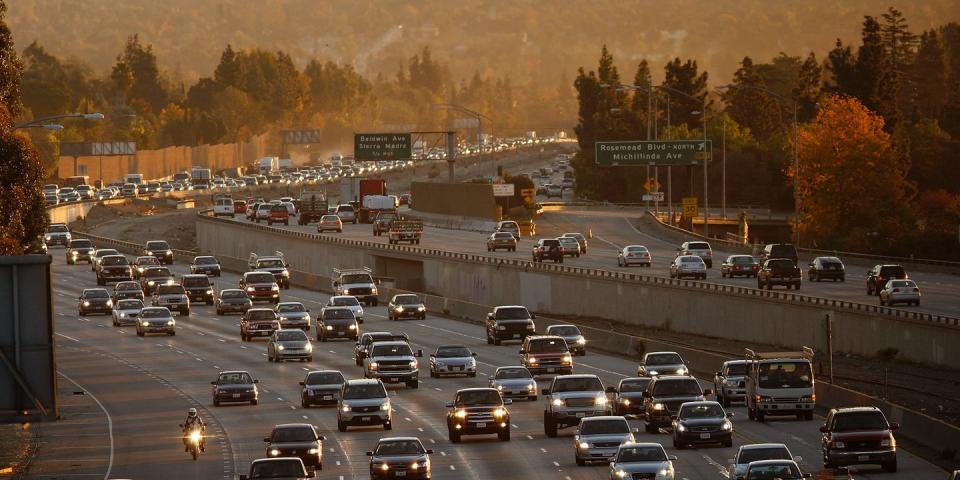Cheap Full Coverage Insurance: Everything You Need to Know

What Is Full Coverage Auto Insurance?
When looking into full coverage car insurance, that means you have coverage for your own vehicle and not just the other driver's. It usually combines comprehensive and collision coverage, which helps if your vehicle is damaged. It also includes liability coverage, which pays for damages and injuries you might cause to others.
Full coverage isn't a type of policy, but it combines required and optional coverage, including the following:
Bodily injury liability: This includes the medical costs stemming from injuries or deaths from an at-fault accident.
Property damage liability: This covers the costs for property damage you caused in an accident.
Uninsured motorist bodily injury liability: This includes medical costs after an accident involving an uninsured driver. According to NerdWallet, this coverage is required in 20 states, along with Washington, D.C.
Uninsured motorist property damage coverage: This covers the costs of an accident with an uninsured driver. It's required in seven states and Washington, D.C.
Collision coverage: This includes costs to your vehicle if you cause an accident with another vehicle or hit an object. It's usually optional, although if you have a loan or lease, the lender might require it.
Comprehensive coverage: This includes costs from an incident outside your control, such as inclement weather, vandalism, and theft. It's also typically optional.
Despite its name, full coverage insurance doesn't cover everything. Depending on the state, the following aren't included with this type of coverage:
New car replacement
Roadside assistance
Underinsured and uninsured motorist coverage
Medical payments coverage
Personal injury protection
What Is the Average Full Coverage Insurance Cost?
NerdWallet states that the national average for full coverage insurance as of 2021 is $1592 annually. This number considers that the driver is a 40-year-old driver with good credit.
Most insurers use a credit-based insurance score that takes into consideration payment history and outstanding debt. This number is different from one you would get from a regular credit score. Full coverage costs increase if you have violations on your driving record.
According to NerdWallet, these are the average annual rates for full coverage insurance from some of the largest insurers:
GEICO: $1268
State Farm: $1491
Progressive: $1562
Farmers: $1830
Allstate: $2381
USAA: $1169
Sometimes it's best to compare the minimum coverage amounts against the full coverage costs to know what type of difference you're looking at.
GEICO: $380 for minimum coverage, with a $888 difference from full coverage
State Farm: $550 for minimum coverage, with a $941 difference from full coverage
Progressive: $577 for minimum coverage, with a $985 difference from full coverage
Farmers: $656 for minimum coverage, with $1174 difference from full coverage
Allstate: $759 for minimum coverage, with $1622 difference from full coverage
USAA: $419 for minimum coverage, with $751 difference from full coverage
With these costs, it's also important to note how much coverage you have.
Bodily injury liability: $100,000 for each person
Bodily injury liability: $300,000 for each accident
Property damage liability: $50,000 for each accident
Uninsured motorist bodily injury: $100,000 for each person
Uninsured motorist bodily injury: $300,000 for each accident
Collision and comprehensive coverage: $1000 deductible each
Why Should You Have Full Coverage Insurance?
It's best to purchase full coverage insurance if you fall under the following guidelines:
You have an expensive or new vehicle.
You have a regular commute through heavy traffic.
You live in an area with extreme weather, high risks of animal collisions, or high vehicle theft rates.
You can't afford to replace or repair the vehicle if it is stolen or damaged.
How Do You Compare Quotes for Full Coverage Insurance?
To locate cheaper full coverage insurance rates, you should shop around. This allows you to see if different companies offer lower rates for the same type of coverage. According to NerdWallet, you can save more than $1000 each year by selecting the cheapest available company instead of the most expensive one. You could also save on selecting a smaller, regional insurer.
When comparing these quotes, make sure you do the following:
Use the same coverage information:Input the same liability limits and deductibles so you're comparing costs for the same type of coverage. Make sure you use comprehensive and collision amounts you could pay after a crash.
Compare add-on coverage information: These add-ons, which include accident forgiveness and gap insurance, vary from one insurer to the next. Check with each company for restrictions and details.
Check the driver information: Make sure all the personal information and driving history match.
ValuePenguin states that there are other money-saving steps that you can practice to reduce overall insurance costs:
Reduce coverage amounts: Although this will give you less protection, you won't have to pay as much in coverage. Just make sure you have enough money set aside in case you get into an accident. For instance, you can forego collision and comprehensive coverage, as you're not required by law to carry either. If you have a low-value or older vehicle, this might be beneficial. However, if you purchase a new vehicle or are leasing one, your lender might require that you have these types of coverages.
Increase your deductible: By doing this, you'll lower the amount your insurer will pay you for a claim.
Lower your liability limits: If you opt for this, you're reducing the protection offered by the insurance company. However, you're putting yourself at risk as the insurer won't cover the total cost of property damage or bodily damage if you're found at-fault for an accident.
When it comes to full coverage insurance, you have several options available. Although this type of coverage isn't mandatory, you should consider adding this coverage if you have a newer vehicle as it provides additional coverage if you get into an accident. By shopping around for rates, you can also save money and receive some of the cheapest rates available.
Sources:
https://www.nerdwallet.com/blog/insurance/car-insurance-basics/cheap-full-coverage-insurance/
https://www.valuepenguin.com/best-cheap-full-coverage-auto-insurance
https://www.caranddriver.com/car-insurance/a31263168/what-is-gap-insurance-on-a-car/
https://www.caranddriver.com/car-insurance/a31268853/what-does-full-coverage-car-insurance-cover/
You Might Also Like

 Yahoo Finance
Yahoo Finance 